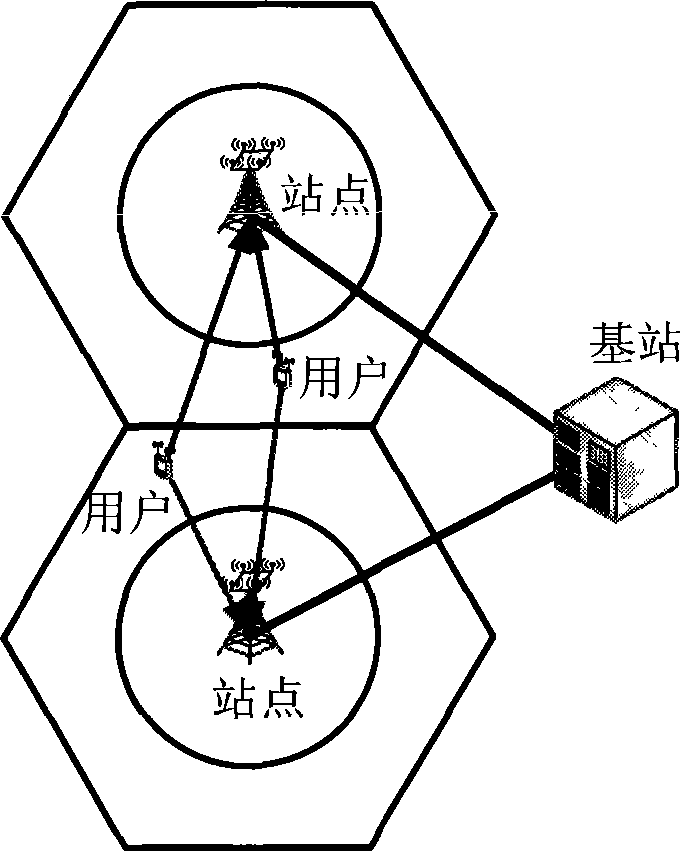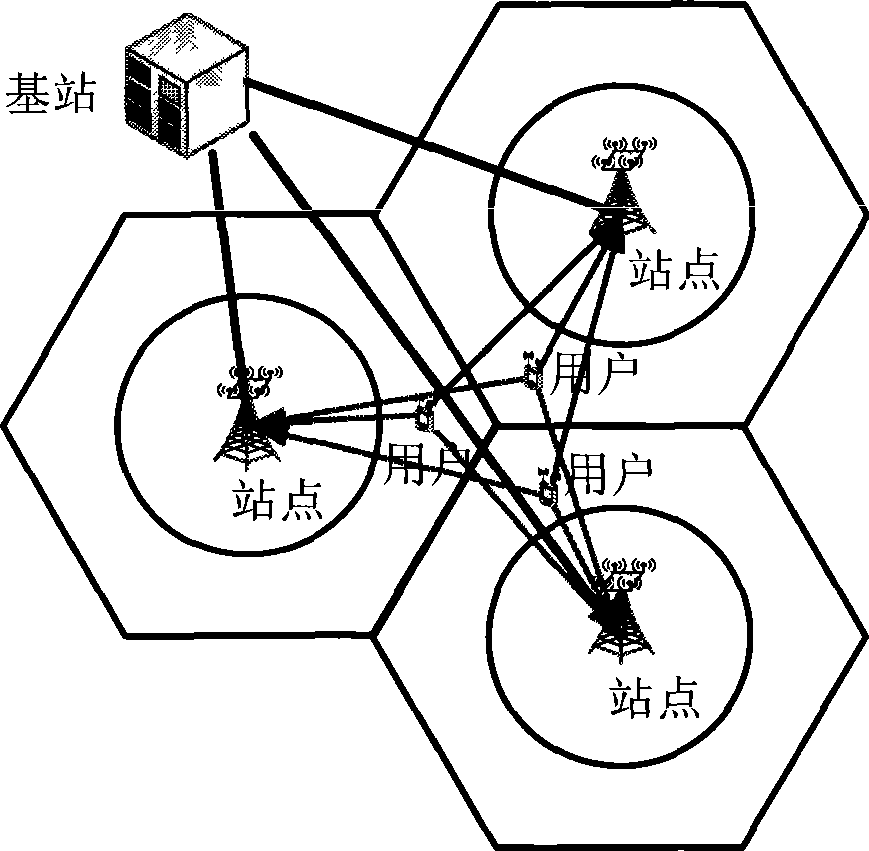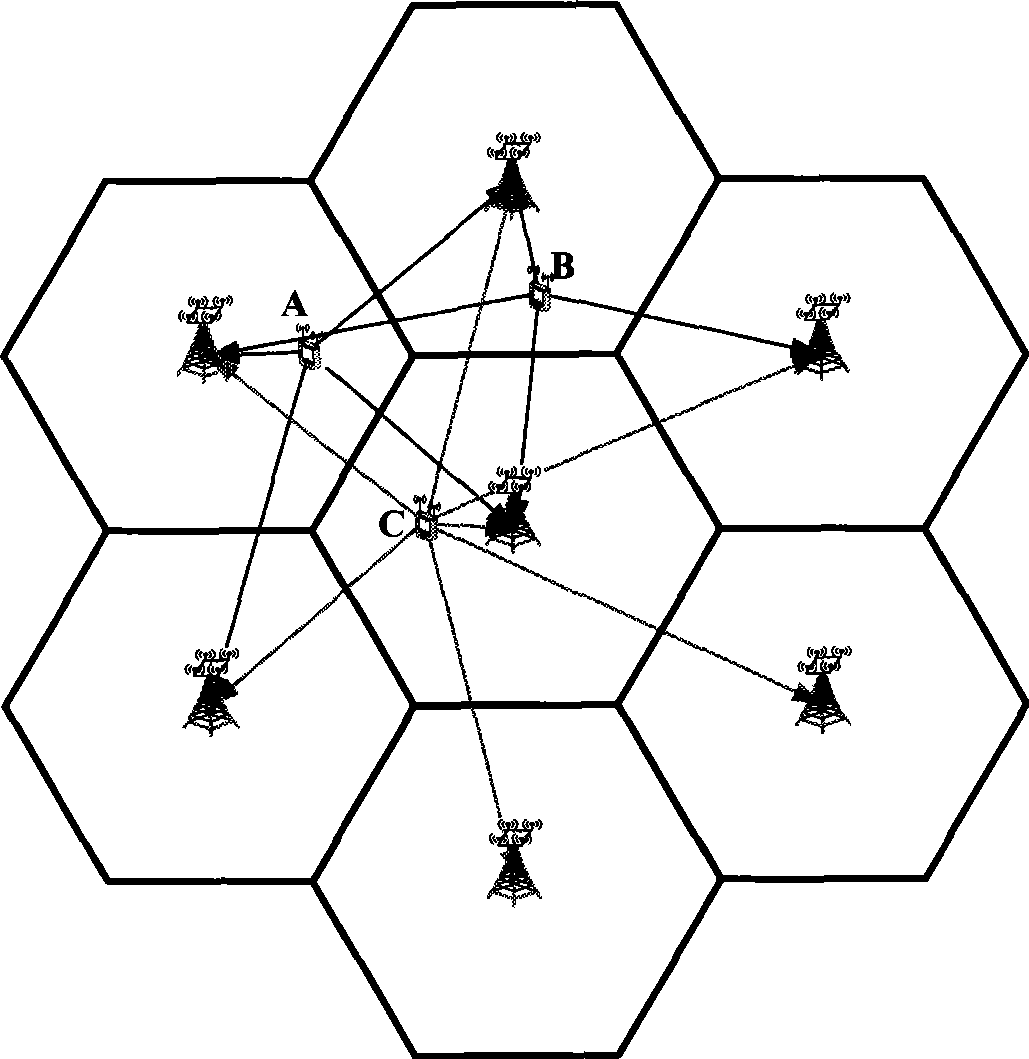Uplink multipoint collaboration implementing method combining inter-cell interference coordination
A technology of inter-cell interference and multi-point coordination, applied in diversity/multi-antenna systems, location diversity, network planning, etc., can solve problems such as inter-cell interference, waste of frequency resources, and non-support of multi-point coordination, etc., to ensure compatibility , improve performance, and simplify the effect of the frequency band division process
- Summary
- Abstract
- Description
- Claims
- Application Information
AI Technical Summary
Problems solved by technology
Method used
Image
Examples
Embodiment Construction
[0046] see Figure 6 , the concrete steps of the inventive method are as follows:
[0047] 1) The station judges whether the user is an edge user or a central user by measuring the user's SINR, and allocates the working frequency band used by the user according to the frequency band division method of ICIC;
[0048] 2) The user sends data to the cell according to the allocated working frequency band, regardless of whether the cell where the user is located and the neighboring cells support CoMP;
[0049] 3) Determine whether the user’s cell and its service support CoMP through the station or base station. If CoMP is not supported, the data sent by the user will be processed in the traditional way, and the data will be extracted by linear or nonlinear detection methods. If CoMP is supported, then enter the step 4);
[0050] 4) If the user in step 3) is in the cell and its service supports CoMP, then the CoMP is divided into three situations, namely:
[0051] 4.1) When the ce...
PUM
 Login to View More
Login to View More Abstract
Description
Claims
Application Information
 Login to View More
Login to View More - R&D
- Intellectual Property
- Life Sciences
- Materials
- Tech Scout
- Unparalleled Data Quality
- Higher Quality Content
- 60% Fewer Hallucinations
Browse by: Latest US Patents, China's latest patents, Technical Efficacy Thesaurus, Application Domain, Technology Topic, Popular Technical Reports.
© 2025 PatSnap. All rights reserved.Legal|Privacy policy|Modern Slavery Act Transparency Statement|Sitemap|About US| Contact US: help@patsnap.com



